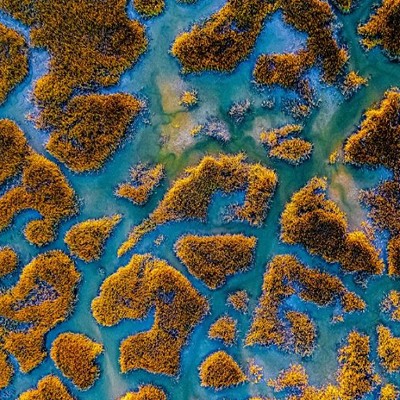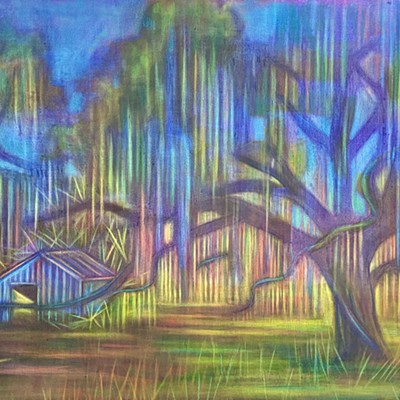Wendell Rudolph Smith?s ?Homage to Bones?
[
{
"name": "Air - MedRect Combo - Inline Content 1",
"component": "14680855",
"insertPoint": "7",
"requiredCountToDisplay": "5",
"parentWrapperClass": "fdn-ads-inline-content-block"
},{
"name": "Air - MedRect Combo - Inline Content 2",
"component": "14680856",
"insertPoint": "15",
"requiredCountToDisplay": "9",
"parentWrapperClass": "fdn-ads-inline-content-block"
},{
"name": "Air - SVP - Leaderboard - Inline Content - 2",
"component": "16852291",
"insertPoint": "10",
"requiredCountToDisplay": "10",
"parentWrapperClass": "fdn-ads-inline-content-block"
},{
"name": "Air - SVP - Leaderboard - Inline Content - 3",
"component": "16852292",
"insertPoint": "20",
"requiredCountToDisplay": "18",
"parentWrapperClass": "fdn-ads-inline-content-block"
},{
"name": "Air - SVP - Leaderboard - Inline Content - 1",
"component": "16852290",
"insertPoint": "25",
"requiredCountToDisplay": "22",
"parentWrapperClass": "fdn-ads-inline-content-block"
}
]
In Portrait of the Self; Exodus of the Spirit...and within us exile resides, Wendell Smith represents his face on an irregular shaped piece of canvas mounted on chicken wire with a halo constructed of toothpicks.
This head is hung high on the wall, and in place of the body we would expect to see below, numerous strings, like vapors or white dread locks dangle, reaching down to the floor where their excess lengths form a small heap.
Redemption File...I will always search for mercies, is another self-portrait, this one with a gold leaf mark in the center of the forehead, like an Indian caste mark, is on a piece of canvas and mounted on chicken wire. Hanging below this image, an untidy pile of what I think are also various self-portraits, this time in profile, is stuffed and roped together between two book covers and then imprisoned in a cage of chicken wire.
In Beneath the Rainfall...happy are those who are called to shelter, an abstract painting on a sheet of canvas has been molded to form a sack and tied with a rope at the waist as if it contained a hidden figure. Fine threads of strings and knotted gold chain hang in front. The image is imprisoned in these wires of rain.
Between sculpture and painting, between abstraction and representation, between construction and destruction, between inside and outside, the overall sensation the sensitive viewer experiences while amongst these works is that of a pain being constantly caressed, the way a tongue massages an aching tooth; or the complex feeling set up when rubbing ointment on a cut - at once cooling and healing and abrasive and hurting.
Better still is the analogy of the self- hugging of a person in the fetal position, holding still and hiding the limbs. This is an art created from the artists descent within. This journey he is taking pierces the outer world of appearances to a center where the truth of the contemporary human condition is revealed as a painful anxiety, as if a claw of sharp nails was scratching at the bare bones of the human consciousness.
There are two Americas: the one we live in, Anglo North America, and the other, which starts at the Rio Grande and stretches down to Tierra del Fuego and includes the Caribbean islands.
The America we are living in is ruled by a homogenizing modernity; the other America still resists this domination. Wendell Smith comes from Trinidad in the other America, where the honest interior journey with its accompanying risks is still central to the necessity of art.
Aubrey Williams, an artist from Guyana, and exiled in London, stated of his art in a 1987 interview, that the anxiety at the core of his work which he described as the fire in the belly, was a South American construct: Its the smell of old blood. I think so. Its the smell of the presence of the conquistadors. Its the smell of a loss and a replacement of lesser than what was destroyed. Its a quality coming out of forced change, a displacement of identity. Violation and yet new growth asserting itself, but never profoundly, never being able to overcome what its up against. Its a whole lot of things. Its a big galaxy of human consciousness.
Trinidad is still a pluralistic society, containing vestiges of its original peoples along with the influences of Spain and England, the dominance of those of African descent and a considerable population of people from the Indian subcontinent brought there by the British. It is multi-religious, that is pre-colonial African, Christian, Hindu and Muslim.
Silent Stare...you live in quiet exile covered by memories, is a large cut-out canvas figure mounted on chicken wire. It retains a human quality while it also references the abstraction of a map. Featureless and limbless, unless the two tail-like forms at the bottom can be read as legs, it is covered in a full spectrum of colors.
There is something uncomfortable about this image. The title directs us to the problem of exile in a country like this United States, where modernity has destroyed plurality with its pre-modern cultures, and where consumption reduces everything to appearances.
The tragedy of this culture (where the worst has already happened) is that if it were still possible to pierce through appearances and descend within, one would probably not feel the fire in the belly or the clawing at the bones of the spirit.
But here in Anglo America we must face the dark future aware that a lethal injection has been administered to the individual soul in these more advanced lands and here the artist faces a colossal struggle to feel his own humanhood. To find someone to talk about.
The Pinnacle Gallery is at 320 E. Liberty St.
Bertha Husband is a native of Scotland who has studied art at Oxford University and Ruskin School of Fine Art. She has an MFA from the School of the Art Institute in Chicago. Her art criticism has appeared in the Chicago Reader, Somnambulist, and Left Curve. w
This head is hung high on the wall, and in place of the body we would expect to see below, numerous strings, like vapors or white dread locks dangle, reaching down to the floor where their excess lengths form a small heap.
Redemption File...I will always search for mercies, is another self-portrait, this one with a gold leaf mark in the center of the forehead, like an Indian caste mark, is on a piece of canvas and mounted on chicken wire. Hanging below this image, an untidy pile of what I think are also various self-portraits, this time in profile, is stuffed and roped together between two book covers and then imprisoned in a cage of chicken wire.
In Beneath the Rainfall...happy are those who are called to shelter, an abstract painting on a sheet of canvas has been molded to form a sack and tied with a rope at the waist as if it contained a hidden figure. Fine threads of strings and knotted gold chain hang in front. The image is imprisoned in these wires of rain.
Between sculpture and painting, between abstraction and representation, between construction and destruction, between inside and outside, the overall sensation the sensitive viewer experiences while amongst these works is that of a pain being constantly caressed, the way a tongue massages an aching tooth; or the complex feeling set up when rubbing ointment on a cut - at once cooling and healing and abrasive and hurting.
Better still is the analogy of the self- hugging of a person in the fetal position, holding still and hiding the limbs. This is an art created from the artists descent within. This journey he is taking pierces the outer world of appearances to a center where the truth of the contemporary human condition is revealed as a painful anxiety, as if a claw of sharp nails was scratching at the bare bones of the human consciousness.
There are two Americas: the one we live in, Anglo North America, and the other, which starts at the Rio Grande and stretches down to Tierra del Fuego and includes the Caribbean islands.
The America we are living in is ruled by a homogenizing modernity; the other America still resists this domination. Wendell Smith comes from Trinidad in the other America, where the honest interior journey with its accompanying risks is still central to the necessity of art.
Aubrey Williams, an artist from Guyana, and exiled in London, stated of his art in a 1987 interview, that the anxiety at the core of his work which he described as the fire in the belly, was a South American construct: Its the smell of old blood. I think so. Its the smell of the presence of the conquistadors. Its the smell of a loss and a replacement of lesser than what was destroyed. Its a quality coming out of forced change, a displacement of identity. Violation and yet new growth asserting itself, but never profoundly, never being able to overcome what its up against. Its a whole lot of things. Its a big galaxy of human consciousness.
Trinidad is still a pluralistic society, containing vestiges of its original peoples along with the influences of Spain and England, the dominance of those of African descent and a considerable population of people from the Indian subcontinent brought there by the British. It is multi-religious, that is pre-colonial African, Christian, Hindu and Muslim.
Silent Stare...you live in quiet exile covered by memories, is a large cut-out canvas figure mounted on chicken wire. It retains a human quality while it also references the abstraction of a map. Featureless and limbless, unless the two tail-like forms at the bottom can be read as legs, it is covered in a full spectrum of colors.
There is something uncomfortable about this image. The title directs us to the problem of exile in a country like this United States, where modernity has destroyed plurality with its pre-modern cultures, and where consumption reduces everything to appearances.
The tragedy of this culture (where the worst has already happened) is that if it were still possible to pierce through appearances and descend within, one would probably not feel the fire in the belly or the clawing at the bones of the spirit.
But here in Anglo America we must face the dark future aware that a lethal injection has been administered to the individual soul in these more advanced lands and here the artist faces a colossal struggle to feel his own humanhood. To find someone to talk about.
The Pinnacle Gallery is at 320 E. Liberty St.
Bertha Husband is a native of Scotland who has studied art at Oxford University and Ruskin School of Fine Art. She has an MFA from the School of the Art Institute in Chicago. Her art criticism has appeared in the Chicago Reader, Somnambulist, and Left Curve. w
























